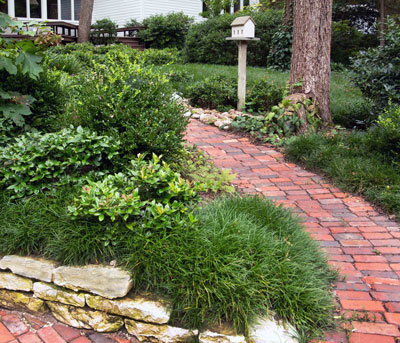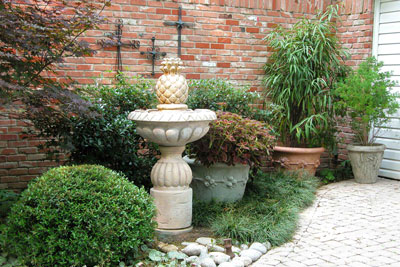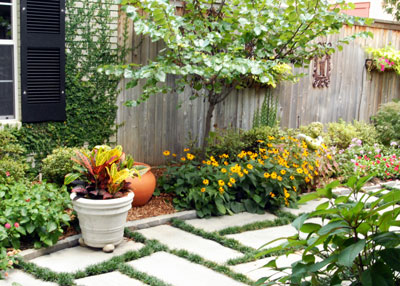Landscaping the Small Spaces
Interior decorators will tell you that if you’re choosing furniture for a small room, you don’t want pieces that take four bulky guys to deliver. You just won’t have room for them.
Carry that same principle outdoors as you remember to choose plants that stay small at maturity, perhaps also fine- or medium-textured as well, just to lessen their visual “weight” in the landscape. The worst thing you can have is bold-textured, overgrown and shrouding plants that close in from all sides.

Photo: We’ve tried to get several uses out of each part of our landscape around the Sperry home grounds.
Begin with a drawing of your little area. Whether it’s a patio garden, a breakfast nook or the entryway landscape, draw it to scale. Use graph paper so you can illustrate sizes and distances precisely. (You can download graph paper that can be printed at no charge online.) Draw in all of the permanent features such as sidewalks, patios, pools, lights, grill – whatever is going to stay there, draw it into your plan.
Make a list of your expectations of that part of your landscape. Think about how best you can achieve as many goals as you can as you mull on your project for a few days. If you want to do additional sketches, make photocopies of your scale drawing, and brainstorm on them. That way, if your ideas change, you won’t have to start from the beginning to finish your plan.

Photo: I’m a big fan of Pavestone concrete pavers. This is the edge of our driveway/courtyard, but it’s also an area where we entertain friends.
Develop a list of surfaces you may want to consider. It could be patterned concrete, brick or concrete pavers, decomposed granite, wood or faux wood decking, or decorative stone. Since it’s a small area, you’ll probably want to stay with a softer look and finer textures. Large flagstones, for example, would draw undue attention to the small size of the garden.
The same thought processes would apply to fences and walls if you plan to include them. Wrought iron, lattice and louvered fencing won’t feel nearly as confining as a solid stockade fence or stone wall. If you already have a solid wall, vines trailing over it can soften its look and lessen the feeling of confinement.

Photo: Plants were chosen for this Dallas-area garden that would stay in scale with to the amount of space available for them.
And then we come to the plants. Here more than anywhere, you need to do your homework carefully. While patios and walls won’t grow larger with time, plants certainly will. Make a list of the plants you like best, then do homework on their mature sizes and growth forms. Use only those that will stay within the spaces you have for them. Pruning should rarely be used as a means of size management. It’s much easier to address it when you’re planning and buying.
Let your local independent retail garden center professional advise you. They’re the people who work with plants fulltime. They’re the people who are most likely to go home and garden. Their advice is first-hand and timely.
